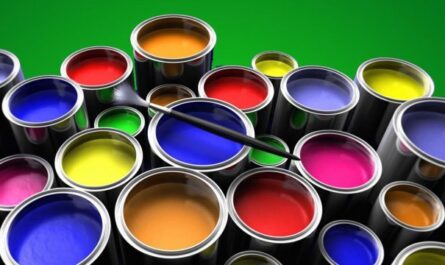Anti-Corrosion Coatings: Protecting Infrastructure from Environmental Damage
Corrosion is a serious issue that affects infrastructure and industrial equipment worldwide. The effects of corrosion cost billions of dollars each year in maintenance, repairs and replacement. However, utilizing proper anti-corrosion coatings can significantly extend the lifespan of assets and reduce corrosion-related costs. In this article, we will explore various anti-corrosion coating technologies and their applications in protecting structures from environmental degradation.
What is Corrosion?
Before discussing anti-corrosion coatings, it is important to understand what corrosion is and how it occurs. Corrosion is a natural process where metal surfaces react with their environment, like air, water and soil, which causes gradual deterioration. The main causes of corrosion include oxygen, water, chemicals and bacteria. When metals are exposed to things like moisture, oxygen, chlorides or acids, an electrochemical reaction takes place that converts the base metal into metal oxides or chlorides. Over time, this degradation can compromise the integrity of structures.
Common Industries Affected by Corrosion
Nearly every industry is impacted by corrosion to some degree. Some of the sectors that deal with significant corrosion issues include:
– Oil and Gas: Infrastructure like pipelines, wellheads, tanks and rigs are routinely exposed to corrosive environments both above and below ground. Failures can be catastrophic and costly.
– Infrastructure: Bridges, tunnels, roads and buildings rely on structures that must withstand weathering and environmental conditions for decades. Underground corrosion shortens their design lifespans.
– Water and Wastewater: Tanks, pipes, pumps and treatment equipment used in water distribution and processing are continuously threatened by water’s corrosive properties if not properly protected.
– Manufacturing: Industrial plants have a wide variety of metal components and equipment subject to atmospheric, water-based and chemical corrosion when producing goods.
– Marine: Ships, offshore platforms, ports and coastal defenses all require anti-corrosion solutions to resist saltwater and humidity at sea for extended periods of operation.
Types of Anti-Corrosion Coatings
There are various coating technologies available for selecting the right corrosion protection solution based on the asset and operating environment. The major categories include:
Epoxy Coatings
Epoxy coatings are durable, chemical and heat resistant and form a tough barrier to protect metal surfaces. They are commonly used in areas exposed to moisture, chemicals or thermal cycling. Various epoxy formulations are suitable for immersion, industrial or topcoat applications.
Polyurethane Coatings
Polyurethane coatings provide outstanding abrasion and impact resistance along with resistance to chemicals, moisture, ultraviolet light and thermal cycling. They are frequently applied as a topcoat over a primer for demanding exterior exposures like pipelines, structural steel, offshore structures and mining equipment.
Polyurea Coatings
Polyurea coatings offer extreme corrosion and chemical resistance for long-term protection of steel and concrete in severe environments with continuous submersion or rugged abrasion. They are widely used in infrastructure projects and in lining wastewater tanks and pipelines where durability is paramount.
Zinc-Rich Coatings
Zinc-rich coatings are commonly applied as primers that contain a high volume of metallic zinc to form a galvanic corrosion cell over steel. Upon exposure, zinc sacrificially corrodes to protect the substrate for 15-20 years in many atmospheric environments.
Cementitious Coatings
Polymer-modified cementitious coatings bond strongly to concrete and provide moisture and corrosion protection. Reinforced concrete structures like bridges, tanks and water towers utilize cementitious anti-corrosion barrier coatings from the surface downward.
Heat Resistant Coatings
High-temperature coatings can resist temperatures up to 1000°F to protect steel vessels, pipes, tanks and plant equipment operating in corrosive high-heat conditions. They are insulating and withstand severe thermal cycling without degrading.
Anti-Corrosive Coatings in Action
Here are some examples of how anti-corrosion coatings are implemented:
Oil and Gas Infrastructure – Epoxy and polyurethane pipeline coatings are buried or immersed with the line and shield it from corrosion during operation. Cathodic protection and coatings together can provide 50+ years of protection.
Bridges and Tanks – Cementitious or polyurea linings/coatings provide corrosion protection on the interior and exterior concrete surfaces respectively, enhancing durability for design life of 75+ years.
Marine Vessels – Multiple coating/preservation systems are utilized, including zinc-rich primer with polyurethane topcoats, high-build epoxies for cargo holds and tanks along with cathodic protection. Periodic inspections and maintenance extends ship lifecycles.
Wastewater Treatment – Epoxy, polyurethane and cementitious corrosion protection coatings are applied to address diverse corrosive exposures to sludge, gases, chemicals and wastewater in tanks, clarifiers, digesters and piping.
Industrial Facilities – Corrosion-resistant coatings shield processing equipment, vessels and structural components from corrosive production chemicals and fumes, reducing replacement costs and unplanned outages.
Coatings and cathodic protection technologies together can defend infrastructure from aggressive environments, minimizing maintenance and enabling predictable lifecycles. Proper coating selection, surface preparation and application ensure maximum corrosion protection performance.
In summary, anti-corrosion coatings provide a critical barrier to preserve the structural integrity of assets across industry sectors. From pipelines to processing equipment and marine vessels to municipal infrastructure, selecting the right coating system for each application and environment can significantly reduce corrosion costs and extend asset service life for decades to come. Implemented strategically, protective coatings deliver high value through corrosion mitigation and protection of capital investments.



